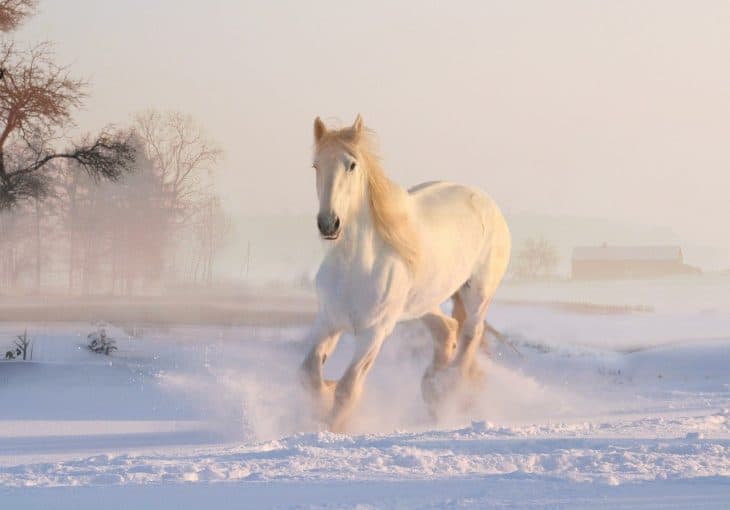
Humans and horses have coexisted for a very long time. Used for trade, travel, and combat, civilizations have literally been built on the backs of horses. Today, they still serve many industries, whether in essential labor or pure entertainment. However, there’s more to these equestrians than what meets the eye. Take a closer look at one of history’s most domesticated animals with these horse facts.
- There are over 300 breeds of horses around the world today.
- Horses can live up to 30 years.
- The average horse grows from 14 to 18 hands big.
- Horse pregnancy typically lasts between 320 and 370 days.
- The USA is the country with the most horses at 10.2 million individuals.
- Horses first evolved from 55 to 45 million years ago.
- Horses went extinct in the Americas around 12,000 years ago.
- Humans began domesticating horses around 4000 BC.
- Horses can usually start breeding once they reach the age of 3.
- Central Asian people buried their dead with horses with chariots around 2100 BC.
- Horse-drawn war chariots first entered use in various cultures from 2000 BC onward.
- Horse-mounted cavalry first appeared in Mesopotamia, at the start of the Iron Age.
- The Parthians made good use of mounted archers in battle against the Romans.
- Both Europeans and Muslims used horses in battle against each other in the Middle Ages.
- Christopher Columbus returned horses to the Americas towards the end of the 15th Century.
- The world’s largest horse stood 21.2 1⁄4 hands tall (86.25 inches, 219 cm).
- Humans hunted horses for meat long before they domesticated them.
- Horses have been featured in many prehistoric cave paintings throughout the world.
- Horses can eat up to 2.5% of their body weight in food in a single day.
- Horses need up to 45 liters of water per day.
Horse Facts Infographics

Horses have an almost perfect range of vision.
Since horses’ eyes lay flat against the sides of their head, it allows them 350° vision. Horses evolved with this feature to evade predators. As such, horses have biggest eyes of any known animal.
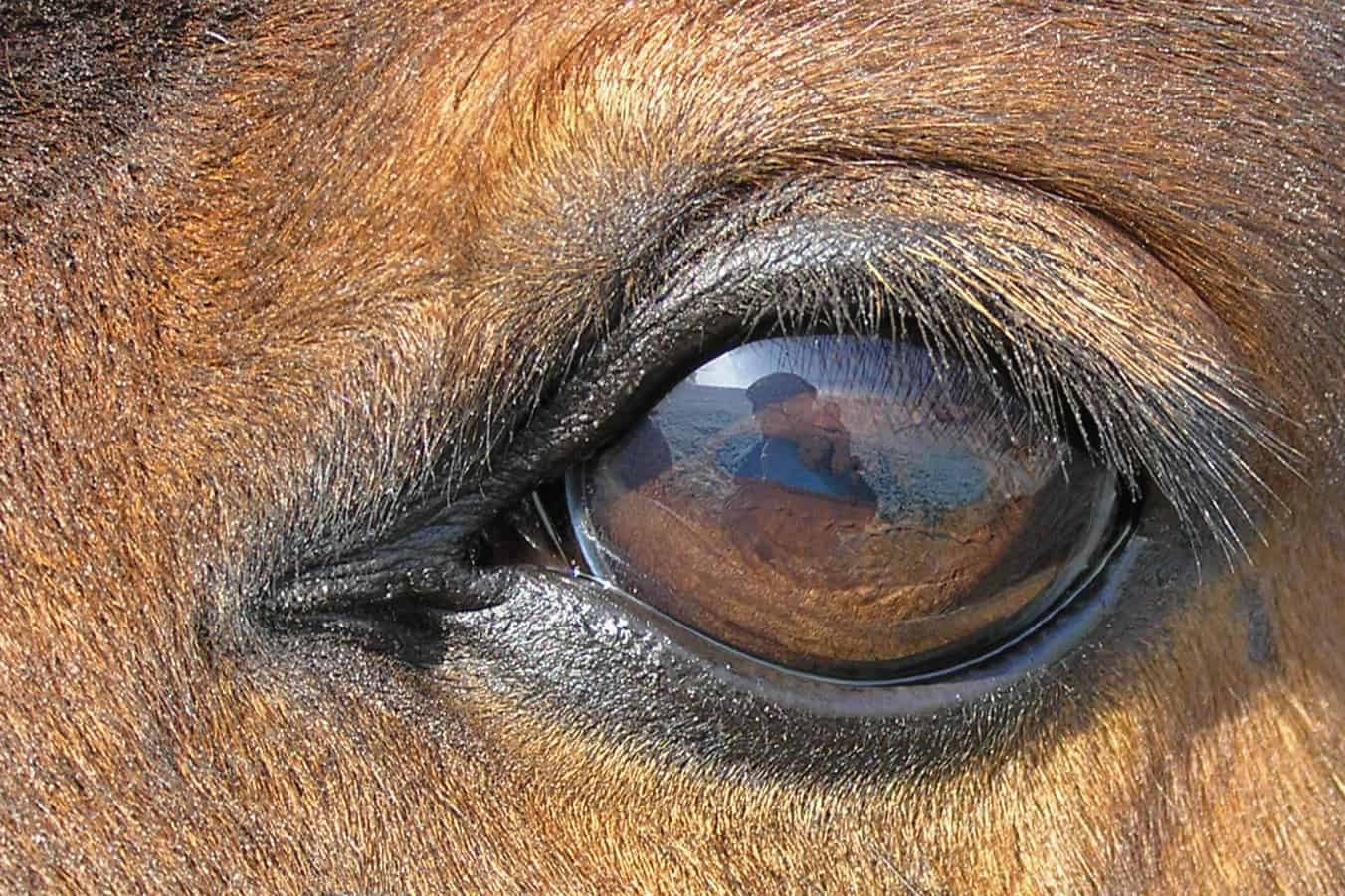
Horses have their own measurement system.
In English-speaking countries, the unit of measurement for a horse’s size is 1 hand, which is equal to 4 inches or 101.6 mm. However, only whole units are read as hands, while decimal numbers are read as inches.
For example, a horse 4.5 h in height reads as 4.5 hands plus 5 inches in height. Note that hands are only used to measure a horse’s height. As per the metric system, their weight is measured in kilograms.
Old Billy was the oldest horse to ever live.
Born in England in 1760, Old Billy served as a workhorse, pulling barges up and down canals. Old Billy lived until 1822, retiring for good at the age of 62. Old Billy’s head was then preserved, and is currently on display in the Manchester Museum.
In modern times, Sugar Puff holds the record for the oldest horse.
The Guinness’ Book of World Records ranks 56 year-old Sugar Puff as the world’s oldest horse. The 10hh Shetland-Exmoor gelding died in 2007 in his hometown of Sussex, United Kingdom. Thus far, no horse has managed to match or break his record.
Competition horses have a shared birthday.
For standardization purposes, most competition horses disregard the actual month and day of their birth. Instead, they share January 1 as their birthday in the northern hemisphere, and August 1 in the southern hemisphere.
The only exception is horses meant for endurance riding, which continue to use their actual birthdays to determine their age.
Different names indicate a horse's age.
Generally, baby horses are called foals as long as they’re under a year old. Yearlings, as their name implies, describe horses aged between 1 and 2. Colts refer to male horses aged between 2 and 4, though it’s also sometimes used for all horses younger than 4 years old.
In contrast, fillys refer to female horses less than 4 years old. Mares are female horses aged over 4, with their male counterparts called stallions if they stay uncastrated. Meanwhile, castrated male horses over 4 years old are called geldings.
Baby horses drink milk.
Foals usually drink their mother’s milk until they reach the age of 6 months, though some may stop nursing as early as 4 months. From then on, they start eating solid food such as grass.
Riding horses start their training young.
Specifically, riding horses start getting used to wearing saddles and harnesses as young as the age of 2. Others start training as old as 4, though even then it’s only to get them used to wearing a saddle in harness.
A common rule of thumb is to not actually ride a horse younger than the age of 5. This allows horses’ bones to finish developing and grow stronger without putting the horse under unnecessary risk.
Horse breeds have 3 categories.
First are the hot-bloods, marked with superior speed and endurance compared to other breeds. Second are the cold-bloods, marked with superior strength, making them very suitable for hard labor. And finally, there are the warm-bloods, usually born from cross-breeding hot and cold-blood horses. Most riding horses actually belong to the warm-blood category.
Arabian horses are a hot-blood horse breed.
Arabian horses are among the oldest known breeds, dating back 4,500 years. The Arabian horse has distinct heads with refined, wedge-like contours and broad foreheads. They also have large eyes and nostrils, but relatively shorter muzzles.
Their speed and endurance often makes them the mount of choice for endurance riding. This also explains why Arabian horses are a top pick for cross-breeding with other horses.
Belgian horses are a cold-blood horse breed.
Ironically, Belgian horses descend from destriers, the most common warhorses of the Middle Ages. Originally from the Brabant region of Belgium, Belgian horses are some of the strongest horses in the world. This makes them very suied for hard labor, though in recent decades they’ve also become popular for recreational riding as well as being show horses.
Belgian horses have a cousin breed called the Brabant.
Brabants are actually the older of the two breeds. In fact, before WWII, Belgian horse and Brabant were synonymous for the same breed. It was only after WWII that they became 2 distinct breeds, as a result of different breeding programs. In Europe, the Brabant was bred to make their bodies thicker and heavier. Meanwhile, in the USA, Belgian horses instead got bred to become taller and lighter.
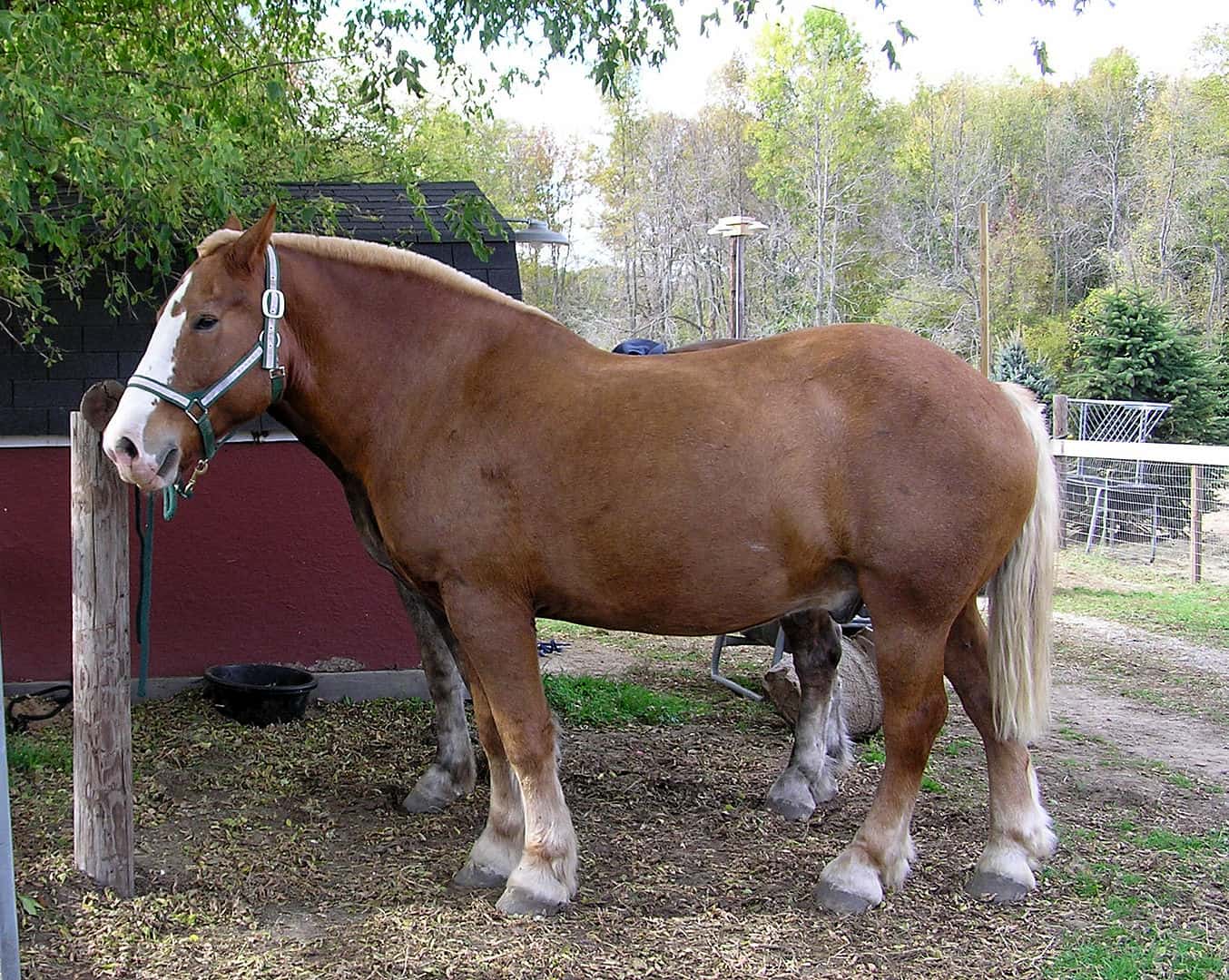
Hanoverians are among the most famous horse breeds in the world.
Counted among the warm-bloods, Hanoverians resulted from a breeding program in the early-18th Century. Launched by King George II, the breeding program mixed together several older breeds to produce the Hanoverian. Those breeds included the Andalusian, Cleveland Bay, Holsteiner, Mecklenburg, Neapolitan, and Thoroughbred breeds.
The result was a horse especially suitable for pulling coaches and carriages, and later for carrying cavalry into battle. After WWI, Hanoverians became a favored breed for both sports and pleasure riding.
Only one breed of wild horse remains in the world.
Unlike their domesticated counterparts, the Przewalski’s horse remains as the sole species of wild horse left. Przewalki’s horses are native to the Mongolian countryside. Compared to domesticated horses, Przewalski’s horse has a stocky build with short legs.
On average, they stand between 12 to 14 hands or between 122 to 142 cm in height. They average around 2.1 meters long, with an average weight of around 300 kg. They also have the genetic distinction of having 66 chromosomes in their DNA, compared to other horses’ 64 chromosomes.
Another breed of wild horse is the Tarpan.
Also called the European wild horse, Tarpans once lived across Europe and Western Asia. As the human population developed, Tarpans declined, eventually becoming extinct when the last known Tarpan passed in a Russian zoo in 1909. Based on historical records, Tarpans stood between 140 and 145 cm tall, with thickly-falling manes, and striped on their back and shoulders.
There have been many efforts to bring back the Tarpan.
For many years in the past, scientists made multiple attempts to mix existing horse breeds together to replicate the Tarpan’s physical characteristics. But despite looking like the Tarpan, the results always have differences in their genetics that separate them from Tarpans.
Horse categories have their own general size and weight characteristics.
Light riding horses usually stand between 14 to 16 hands, or between 142 to 163 cm in height, weighing between 380 to 550 kg. Meanwhile, large riding horses measure between 15 to 17 hands, or 157 to 173 cm in height. These horses weigh between 500 to 600 kg.
Of these categories, work or draft horses are the biggest, standing between 16 to 18 hands or between 163 to 183 cm. These horses typically weigh between 700 to 1000 kg.
The world’s biggest horse lived in the 19th Century.
Originally named Samson, Mammoth was a Shire horse gelding born in 1846 at Bedfordshire, England. Towering at 21 hands and 2 ½ inches, or 219 cm high, the horse was aptly renamed Mammoth. In his life, Mammoth weighed a hefty 1,524 kg.
The world’s smallest horse lives in the USA.
Born in 2001, Thumbelina stands only 43 cm tall. She also only weighs 26 kg. How’s that for cute horse facts?
Ponies are just another kind of horse.
The difference is usually based on height, though the specifics vary from country to country. Most countries set the limit for ponies at 14 hands and 2 inches or 147 cm in height. Meanwhile, Australia sets the limit at 14 hands or 142 cm in height. For the USA, the limit is 14 hands and 1 inch or 145 cm in height.
All ponies share common characteristics.
Generally, ponies have thicker coats, manes, and tails compared to other horses. They also have proportionately shorter legs, wider torsos, heavier bones, and shorter and thicker necks. Their heads are also smaller than those of other horses, with broad foreheads. In terms of temperament, ponies usually exhibit a calmer disposition than horses.

Horses can breed with other horse-like animals.
It may sound like one of the more unlikely horse facts, but horses can mate with donkeys, rearing mules and ninnies as a result. Mules come from a male donkey and a female horse.
In contrast, a ninny comes from a male horse and a female donkey. Other possible pairings include zebras, onagers, and kiang. Regardless of the pairing and its result, hybrids tend to get born sterile, and are incapable of reproducing themselves.
Horse coloration is very diverse.
Scientists have also discovered that no less than 13 genetic variations in horse DNA that control their coloration and continue to discover more as research continues. That said, all horses share the same basic coloration below all their differences: chestnut and black.
The bones of a horse’s legs have some similarities to various human body parts.
A horse’s knees have a build similar to that of human wrists. Structurally, the joints between their thighs and legs also resemble that of human ankle joints. Their legs and ankles are also very much like our own hands, while their shins have a build similar to our knuckles.
Horse hooves also have the same material as our hair and nails.
Specifically, they’re made from the protein keratin.
Farmers and other horse owners put horseshoes on horses to protect their feet.
|Horseshoes keep a horse’s hooves from wearing away, as the soft keratin repeatedly strikes against the ground with every step. Horseshoes are usually made from steel or aluminum, but it’s not unusual for other materials to get used.
These alternatives include rubber, plastic, titanium, even copper or magnesium. To equip them, horseshoes are nailed into the hoof, but this doesn’t hurt the horse at all, much like how trimming a human’s nails doesn’t hurt them.
A horse’s hooves keep growing as long as they’re alive.
This also means that horseshoes need to get regularly replaced, to keep up with the growth. Whether or not horseshoes are equipped, the hoof needs to be trimmed. While the specifics vary from horse to horse, most horses get their hooves trimmed and horseshoes replaced usually between 5 to 8 weeks.
All horses are herbivores.
Unlike cows, horses only have 1 stomach, which is why they have very long intestines to break down plant matter and get the most nutrients out of it. They also depend on large populations of intestinal bacteria to ferment their food and get even more nutrients from them.
Horses can’t vomit.
This makes horses extremely vulnerable to colic, as they can’t release the pressure caused by gas buildup in their stomachs. That, or they can’t expel indigestible materials from their stomachs. In the USA alone, 64,000 horses die every year from colic-based complications.
Horses can’t see red.
Although horses have excellent eyesight whether at day or at night, their eyes can’t perceive the color red. Instead, the structure of their eyes perceives red and similar tones as green. How’s that for cool horse facts?
Horses have a good sense of smell.
Horses have a more heightened sense of smell compared to humans, but it’s no better than a dog’s scent. Horses have 2 separate systems to smell with through their nose. The first is through the nasal cavity into the olfactory nerves.
The second is under the nasal cavity, past a set of glands, dedicated to smelling and understanding pheromones.
Horses also have a good sense of hearing.
A horse can rotate both its ears a full 180°, allowing them to hear all around them with perfect clarity. This gives them a much better range of hearing compared to humans.
Horses like certain kinds of music.
A British study in 2013 showed that horses feel calm and relaxed when listening to classical and country music. In contrast, that same study discovered that jazz and rock music agitated horses. Generally speaking, it was finally concluded that any noise over 21 decibels in strength causes horses to become stressed. Definitely one of the more curious horse facts.
Some parts of a horse’s body are more sensitive to touch than others.
Horses are especially sensitive around their eyes, ears, and noses. In general, horses have a very good sense of touch, to the point that they can feel an insect landing on any part of their body.
Horses have a very good sense of taste.
People have observed them picking through their food, and sorting out the grain they like best to eat. As part of this, their lips can sift out individual grains, thus letting a horse eat what it only wants to eat.
Horses have 4 ways of walking.
On average, a horse walks 6.5 kilometers per hour. They can trot or jog between 13 to 19 kilometers per hour, and canter or lope between 19 to 24 kilometers per hour. Finally, horses can gallop over speeds of 24 kilometers per hour.
Horses have a strong fight-or-flight sense.
When faced with danger, horses tend to run rather than fight, but will fiercely fight with their hooves if left with no other choice. That said, they’re also known to stay and investigate potential threats.
Horses are social animals.
Horses typically gather and move in herds of 3 to 20 individuals, usually led by an alpha female. In addition to their own kind, horses are also known to coexist and bond with other animals like dogs and cows.
Horses develop bad habits when left alone too long.
Much like a dog getting anxious by itself, a lonely horse may start chewing wood and kicking at nearby walls. They might also rock back and forth on their own, as though they’re dizzy, even when they’re not.
Horses can sleep either standing or lying down.
Horses prefer to sleep in groups, with lone horses only getting naps, remaining partly awake in case danger approaches. In a group, horses sleep in turns, some staying awake to watch for danger, only sleeping when the others wake up and watch in their turn.
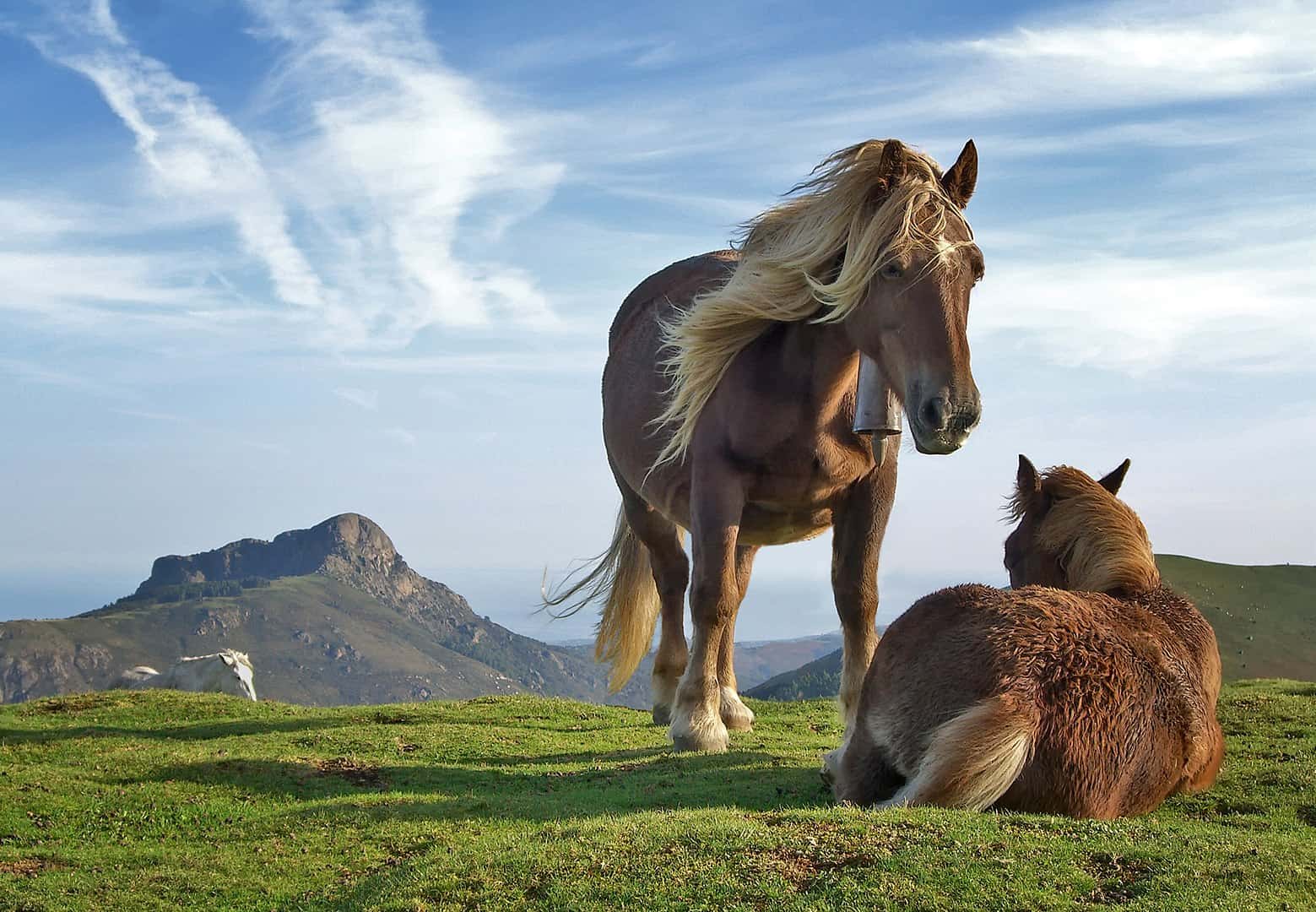
Horses don’t sleep long.
Usually, horses stay asleep for only about 15 minutes. However, they sleep many times over the day, though even their total time asleep is only about 2 to 3 hours on average.
Horses only experience REM sleep when they lie down.
REM sleep is the kind of sleep wherein the sleeper can experience dreams. Horses need to sleep lying down at least once a week, otherwise, they start suffering from sleep deprivation. They might also fall fully asleep while standing, a dangerous development that could potentially grow further into narcolepsy.
Some horse sports go back to military practices.
Dressing, eventing, and show jumping were all developed from military drills. Dressage is a sport where both the horse and their rider perform a series of predetermined movements from solely memory alone.
Meanwhile, eventing is a combination event, with horses and riders performing a series of dressages, cross-country riding, and show jumping to demonstrate their skill. Finally, show jumping is a sport where horses and riders jump a series of obstacles, again to demonstrate their skill.
Rodeo riding is a demonstration of practical skills.
The art of rodeo doesn’t just concern riding or staying mounted on a bucking horse, but it also requires various rope skills. Among the rope skills expected in rodeos include tie-down roping and team roping.
Endurance riding is another example of a horse sport.
Simply put, endurance riding refers to long-distance racing. Typically, endurance racing reaches up to 160 km in a single day. For multi-day events, races cover distances greater than 160 km.
There are 3 kinds of horse racing.
There’s flat racing, which is the straightforward kind where riders and horses dash towards the finish line as fast as they can. Whoever crosses it first becomes the winner. Then there’s steeplechasing, which involves placing obstacles that need to get jumped over in the race. Finally, there’s harness racing, where the rider doesn’t ride their horse. Instead, they ride a two-wheeled cart pulled by their horse at a trot.
Regardless of the kind of race, gambling forms a large part of the race’s economic value.
Workhorses do a variety of tasks around the world.
In third world countries, over 100 million horses work in the agricultural and transportation sectors. Even in first world economies, many horses continue to work in the logging and forestry industry.
Horses also remain in use to round and keep up with cattle on the move, while emergency services find them useful in difficult terrain. Even policemen still use horses for patrol and crowd control purposes.
Horses played a critical role in the history of war.
Whether it’s pulling chariots or carrying cavalry in battle, horses have played a big part in war. Alexander the Great’s mastery of cavalry tactics was critical to his conquest of Persia. The Parthians’ skills as mounted troops halted Roman expansion east from the 1st Century BC onward.
Later on, the Mongols devastated Eurasia and built the biggest land empire in history on the backs of their horses. In Europe, the glamor and legend of knights came from how they dominated the battlefield from their horses. It wasn’t until WWI and the widespread adoption of machine guns that cavalry became obsolete. Today, cavalry units largely exist only for ceremonial purposes but remain in practical use for units expected to fight in difficult terrain.
Mounted archery is a sport and an art in Japan.
Called yabusame, this involves archers in traditional samurai armor riding horses around a track. As they ride around the track, they use a bow and arrow to shoot at targets in various places and positions around the track. With their hands occupied by their weapons, they must guide their mount only using their thighs and legs.
Training takes years, with only the most experienced archers allowed to participate in official events. These official events are very high profile, sometimes reviewed by the Emperor himself. They’re also performed as a show to equally-profile guests, including former US Presidents like Ronald Reagan, George W. Bush, and Barack Obama during their visits to Japan.
Prince Charles of the United Kingdom once attended a yabusame exhibition.
In 2001 the United Kingdom held a yabusame exhibition as part of then-Crown Prince Naruhito’s visit to the country. Prince Charles was very impressed by the riders’ skills, and even more so by how ancient the yabusame tradition was.
One of the most famous horses in fiction is the Trojan Horse.
This wooden statue shaped like a horse led to the fall of Troy. Greek warriors hid inside the hollow statue, and once the Trojans relaxed, they emerged and opened the gates, allowing the Greek armies to storm the city of Troy.
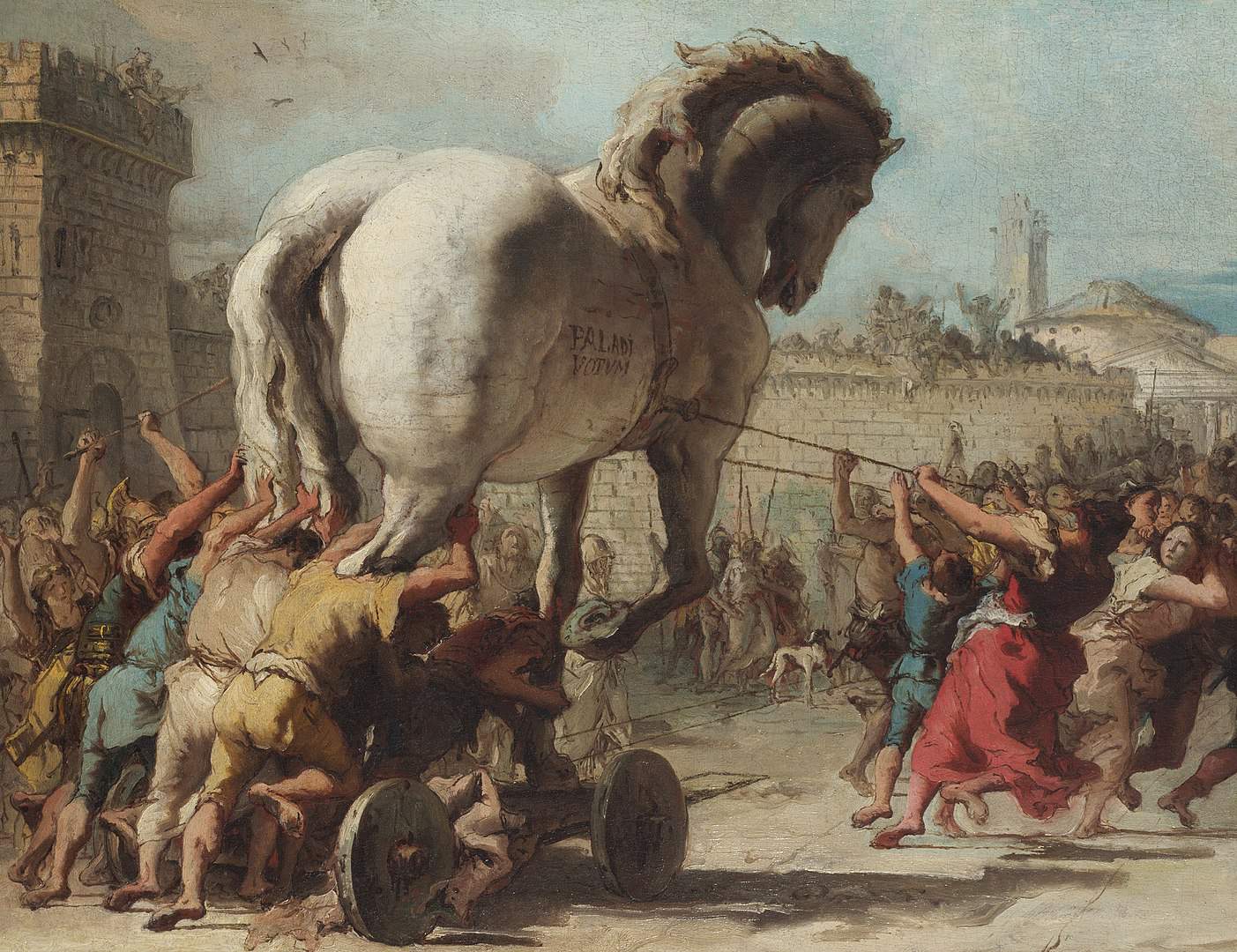
The Trojan Horse shares its name with an infamous series of malware.
Trojan Horses are a series of malware disguised as typical programs. Particularly malign forms of Trojan Horses provide backdoors to allow hackers to access computers without anyone noticing them.
Other forms of Trojan Horses download personal information from the computer or infect other hardware and connected devices. Trojan Horses also delete files in infected computers. Definitely one of the horse facts you’d want to avoid experiencing yourself.
Horses have appeared in art since prehistoric times.
Whether it’s in cave paintings made by prehistoric man, to modern painters and other artists, horses have always had a place in art. Sometimes they’re accompanied by people, other times they stand on their own. Impressionist painters in the 19th Century were especially fond of using horses as subject material for their work.
Horses also have a place in religions around the world.
In the Norse religion, the god Odin rode a six-legged horse named Sleipnir. In Wales and Ireland, legendary figures like Rhiannon and Macha respectively, have the distinction of always portrayed as riding white horses. Meanwhile, one of the Indian god Vishnu’s avatars, Hayagriva, had a horse’s head.
Horse riding has therapeutic effects.
It’s not just riding a horse either, even mere companionship with a horse has proven an effective therapeutic method. Through bonding with horses, people tend to become more confident in themselves and feel encouraged to gain independence in their lives. Now there’s one for heartwarming horse facts.
Horses produce milk.
As surprising as it may sound, humans can drink horse milk, too. In Mongolia, horse milk is used as a base for kumis, an alcoholic drink native to the country. Horsehair is also used in making musical instruments, while hormones taken from the urine of pregnant horses are also used to make certain medicines.
The Mongols used to drink their horses’ blood.
They usually did this during long marches and campaigns. Historians even credit this as a factor in how they moved so far and so fast without needing to resupply. The horses could just replace lost blood when they grazed on the march, and the Mongols fed off their horses’ blood. Definitely one of the more disturbing horse facts.
People can make leather from horse skin.
People usually think of crocodiles and other reptiles, as well as cows and cattle when thinking of making leather. However, horse skin is also usable for leather making and was historically used to make leather for boots, jackets, baseballs, and baseball gloves.
Horses benefit from vaccination too.
If vaccinations work for cats and dogs, then, of course, they work for horses too. These vaccines include those for West Nile Virus, tetanus, and of course, rabies. Definitely one of the horse facts to take note of.
Horses can’t stay in the stable forever.
In some old movies and novels, people are shown riding horses at least once a day. To stay healthy, horses kept in stables need to get let out and stretch their legs for a few hours per day. They don’t have to necessarily be ridden, but they do need to walk or run around for a while.
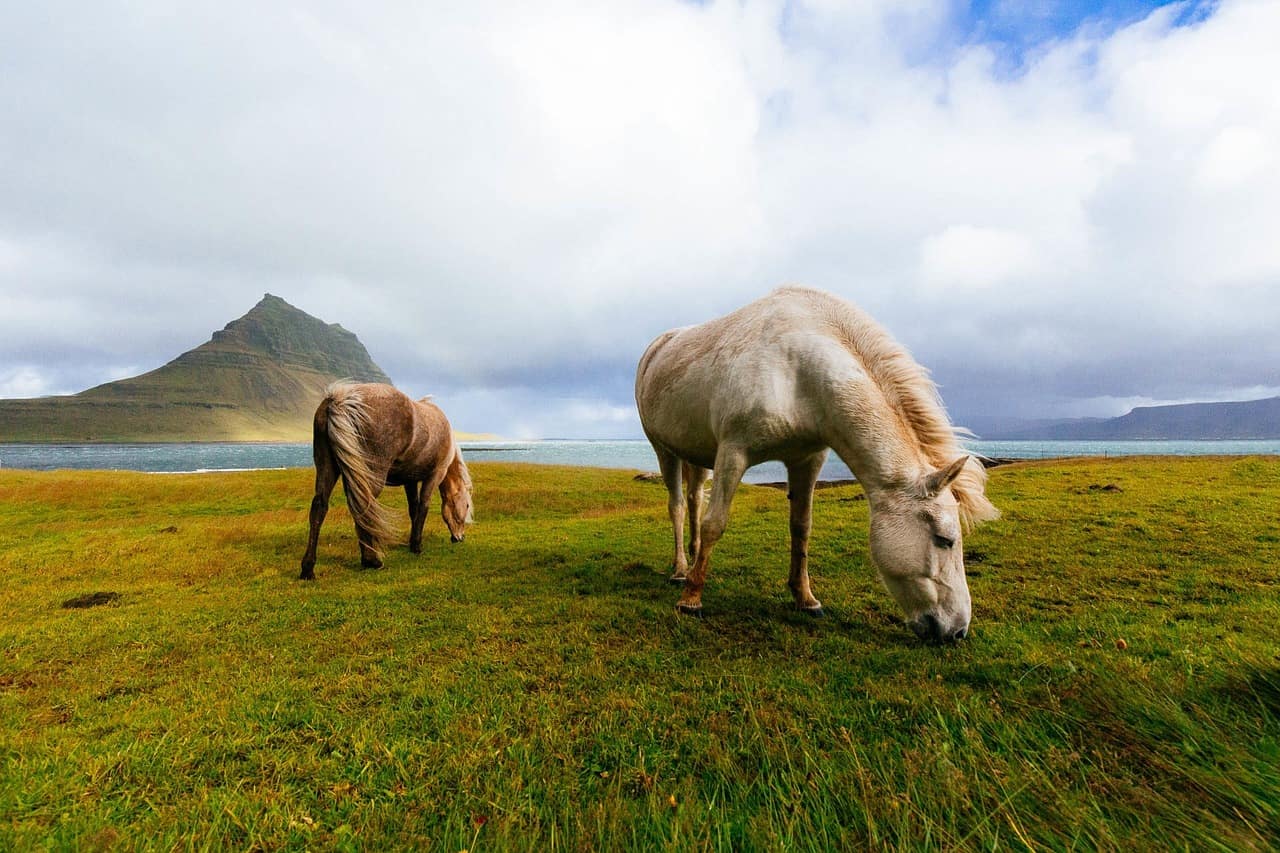
Was this page helpful?
Our commitment to delivering trustworthy and engaging content is at the heart of what we do. Each fact on our site is contributed by real users like you, bringing a wealth of diverse insights and information. To ensure the highest standards of accuracy and reliability, our dedicated editors meticulously review each submission. This process guarantees that the facts we share are not only fascinating but also credible. Trust in our commitment to quality and authenticity as you explore and learn with us.
